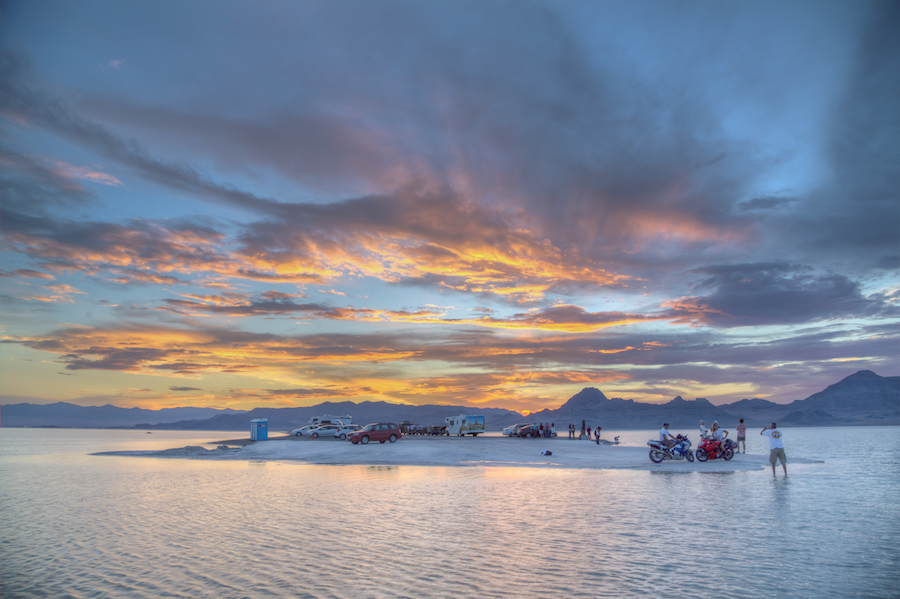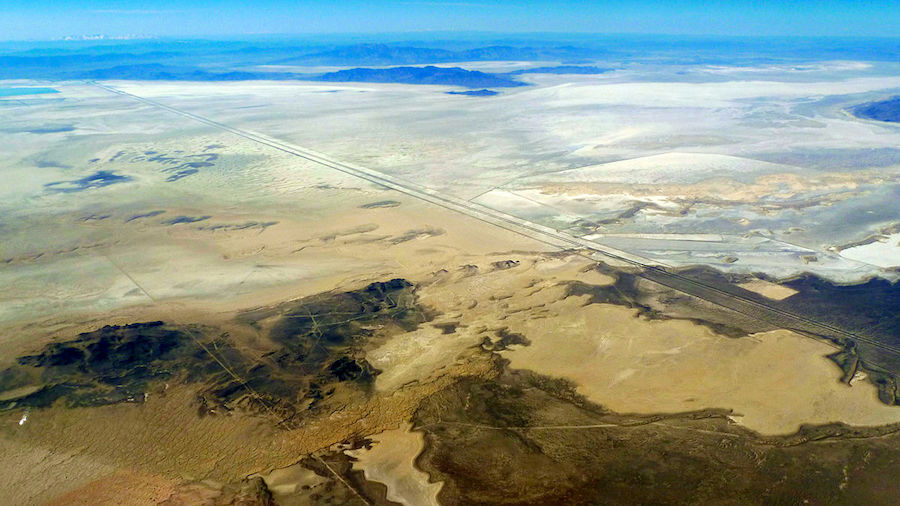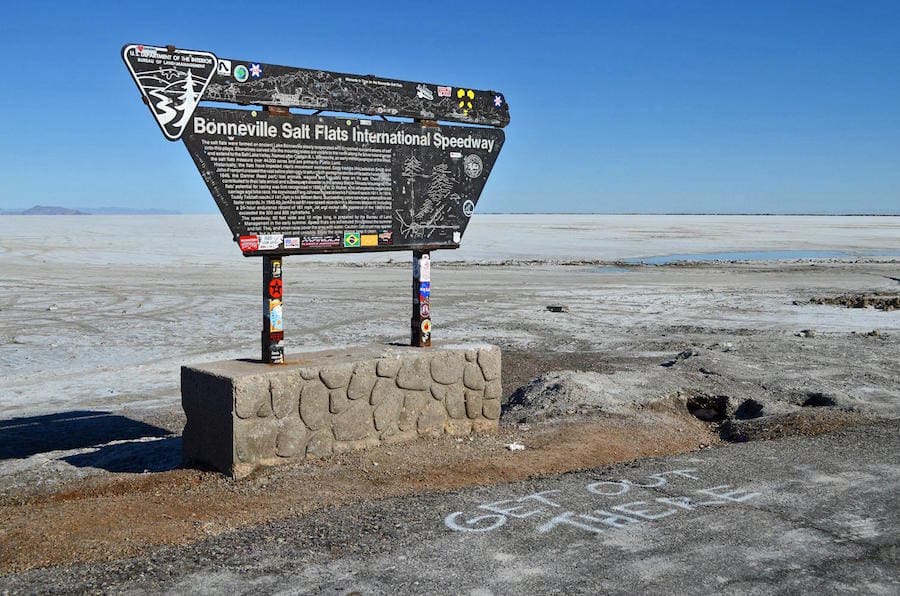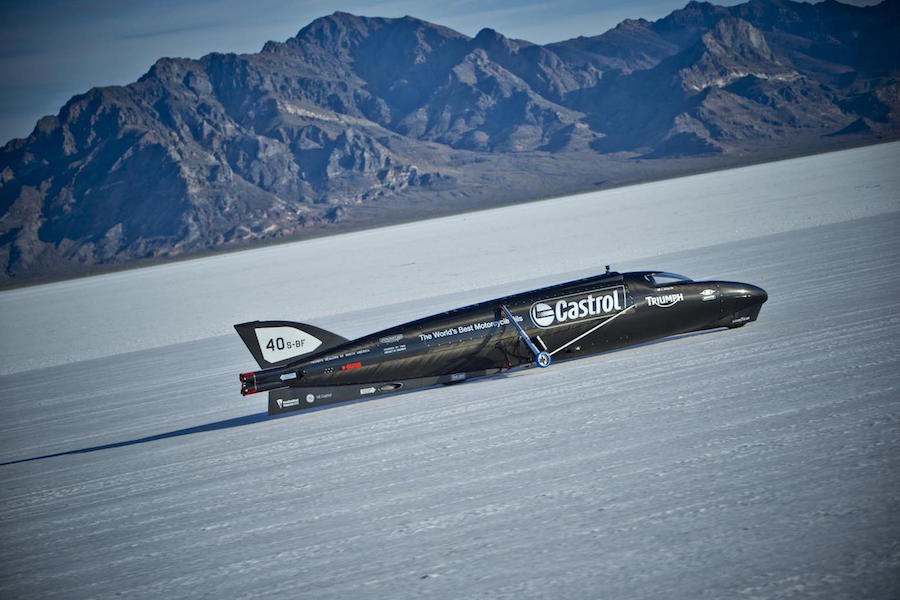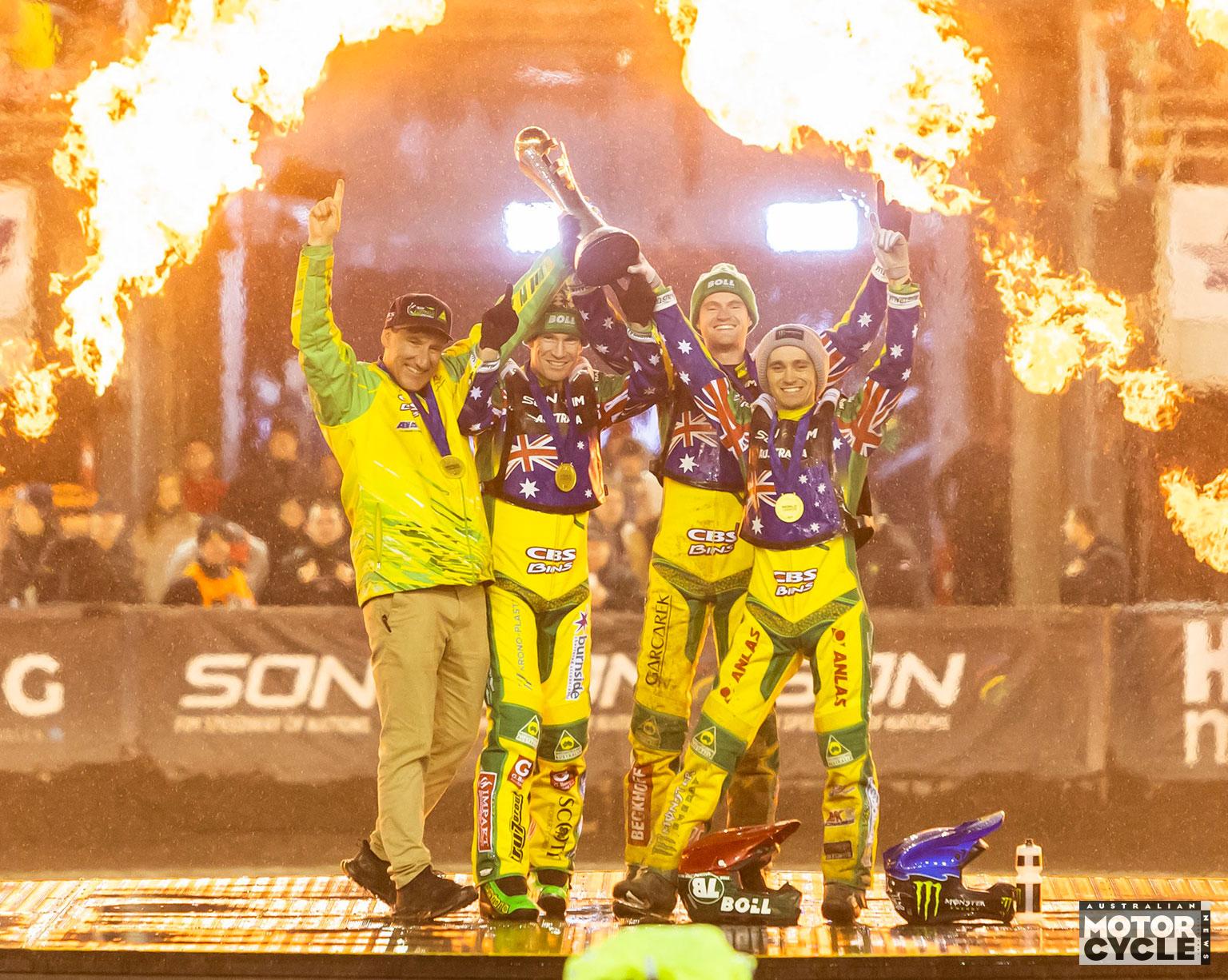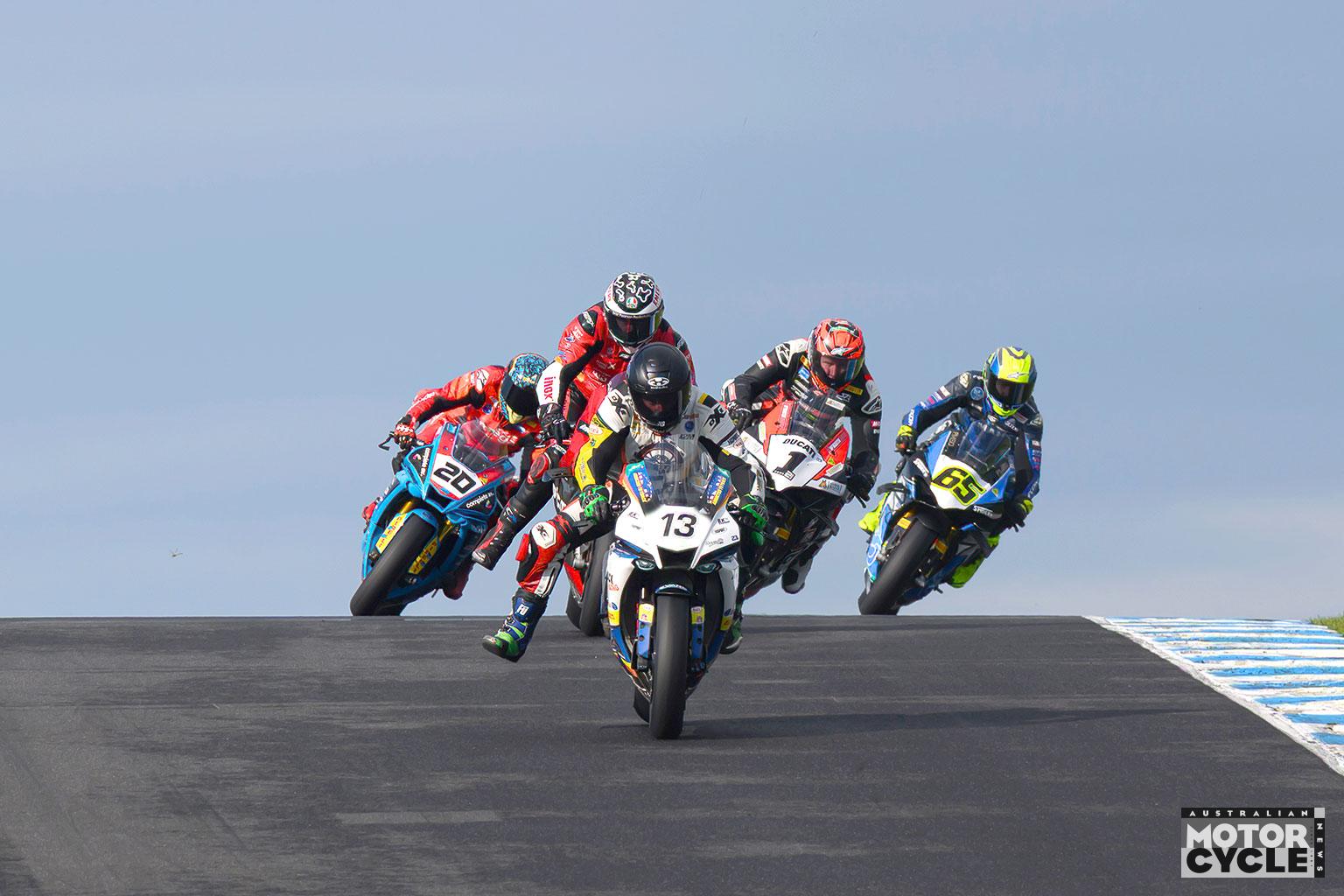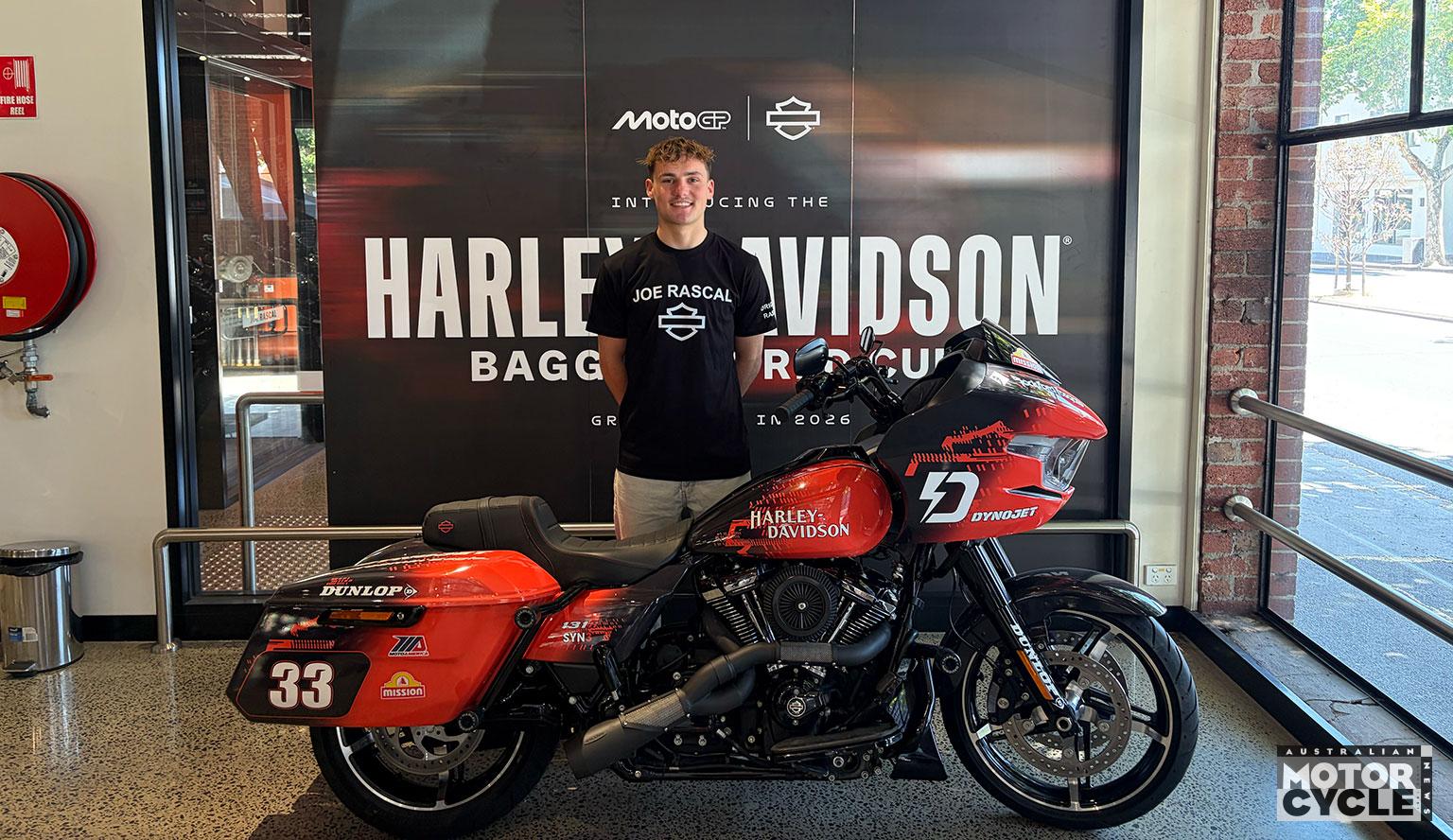Don Vesco- There are few places on earth that are as alien in appearance as the desolate surroundings of the Bonneville Salt Flats. Situated not far from the Wendover Air Force Base in the US state of Utah, this extraterrestrial-looking terrain, covered by an expansive sheet of grubby white salt and girdled by a jagged brown-black mountain range, each year becomes the eerie backdrop for what is simply known as Speed Week.
Run in August by Bonneville Nationals Inc. and held under the auspices of the Southern California Timing Association, this is an event that is the spiritual home of land speed record-breaking. Many come from around the globe to ‘shoot the salt’ and try to put a new mark in the record books. And many fail.
One person whose name is synonymous with the Bonneville salt is Don Vesco. He not only set an outright world land speed record for motorcycles of 318.598mph (512.734km/h), but also an outright world land speed record for a wheel-driven vehicle of 458.440mph (737.788km/h) that stands to this day.
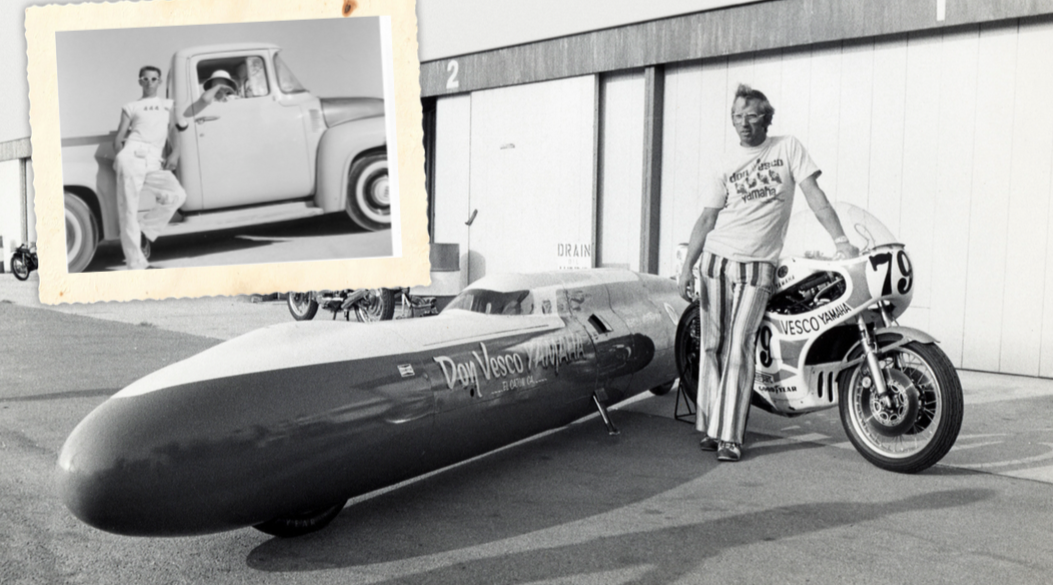
Record-breaking for Vesco, though, was only one part of a lifetime chasing speed.
Don was born in Loma Linda near San Bernardino east of Los Angeles on 8 April 1939, in an environment that not surprisingly nurtured a ‘need for speed’. His father, John Vesco, ran hot-rods and streamliners out of his San Diego body shop on Southern California’s numerous dry lakebeds – a perfect setting for Don and his two younger brothers, Rick and Chuck, to gain an education in all things fast.
Don was mechanically gifted as a child and while still in his teens modified a rigid-framed Triumph 500cc T100R twin to enter his first official race, a local drag race meet
at San Diego’s Paradise Mesa drag strip. What followed was that unique blend of American motorcycle racing, on bitumen, dirt track and TT steeplechase. One of Don’s old Hoover High School buddies and his main rival on the track
in those days was future AMA Hall of Famer Cal Rayborn.
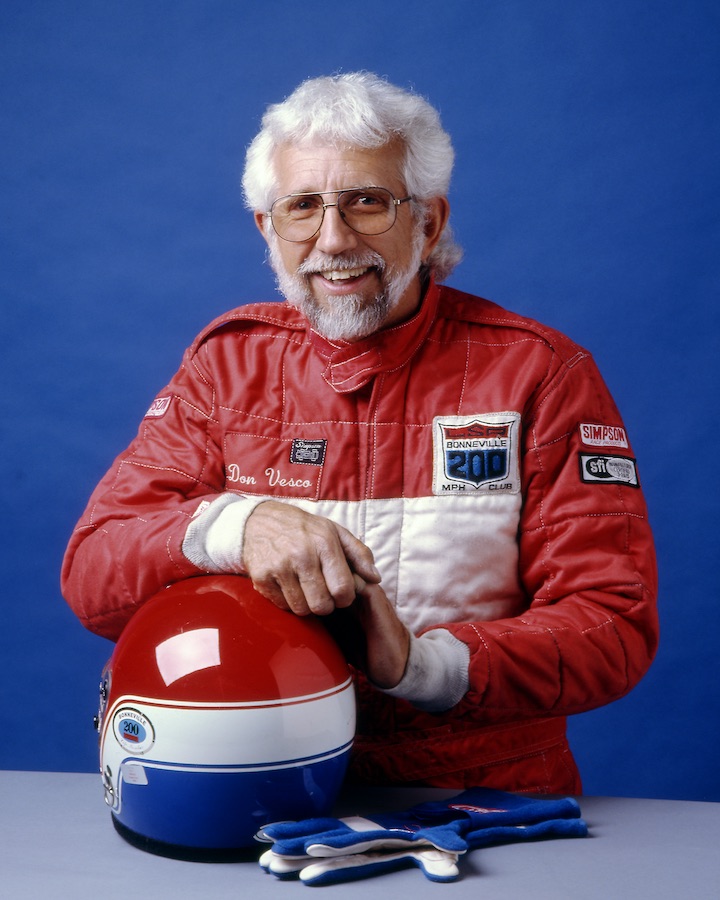
It was in the discipline of road racing that Vesco excelled and it soon became apparent that the Triumph was no match for the Manx Nortons being raced by many of his rivals. Thanks to a loan from his girlfriend Norma, who would soon become the first of his three wives, Vesco was able to purchase a Manx. The combination proved almost unbeatable in local road races at tracks such as Willow Springs and Riverside in the late 1950s and early 60s – at a time when Japanese manufacturer Honda was trying to take a foothold in the lucrative American motorcycle market.
Honda hired Vesco to race its highly successful RC161 four-cylinder four-stroke 250cc grand prix racer in American events to help promote the brand. He duly notched up two wins on the RC161 first time up at the Goleta Airport track in Santa Barbara, but crashed the bike several months later at the same venue.
When a promised ride in the 1962 US Grand Prix at Daytona (an FIM-sanctioned international event) was given to Japanese rider Kunimitsu Takahashi, it was clear that Vesco was out of favour with Honda.
In a twist of fate, another Japanese manufacturer, Yamaha, was also trying to promote its motorcycles in America. Yamaha contacted Vesco to race its RD56 250cc two-stroke GP bike the following year in the open class at the same event. The race, however, wasn’t to be all smooth sailing. Vesco suffered a fall on the infield section of the Daytona circuit, but remounted and went on to lap the entire field to win the 1963 US Grand Prix, giving the Japanese manufacturer its first major victory in America.
Vesco rode again for Yamaha at Daytona in 1964 and this time the Grand Prix was a fully sanctioned round of the FIM 250cc World Championship. Unfortunately, a nasty fall in practice resulted Don breaking his collarbone, and the GP racer was handed to up and coming English rider (and future multiple world champion) Phil Read. However, the bad luck continued for Yamaha and the bike seized its engine during the race.
Yamaha then offered Vesco a bike dealership, which initially he declined, but reconsidered when his other employer complained he was having too much time off through racing accidents. He opened shop at El Cajon, California in 1966.
By the early 1970s, Vesco had two of the world’s best racers riding out of his dealership – Australian Kel Carruthers, the former world 250cc Grand Prix champion who had come to live and race in the US at Don’s invitation, and old racing buddy and rival Cal Rayborn. By the late 70s other greats such as Gene Romero, Dave Aldana, Ron Pierce and Yvon Duhamel had all ridden under the Team Vesco Yamaha banner.
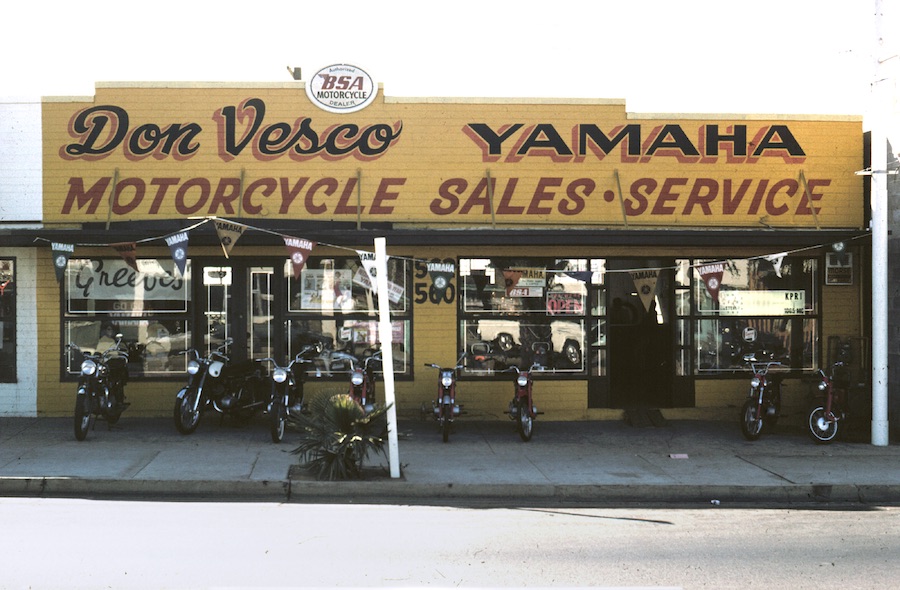
Don had by now shelved his own racing ambitions to concentrate on the dealership, with the satisfaction of having been a factory rider for Honda, Yamaha, Bridgestone and BSA.
It was during this period that Vesco began his highly successful motorcycle land speed record runs at Bonneville Salt Flats. He was no stranger to the salt, having first run a motorcycle there at the age of 16, then in 1963 having joined the exclusive 200mph club, driving his father’s Offenhauser-powered four-wheel streamliner #444 to 221mph.
However, it was the outright motorcycle land speed record that Vesco became synonymous with. The first came in September 1970, using a twin-engine streamliner fitted with Yamaha R3 air-cooled 350cc two-stroke engines to set a new mark of 251.924mph and become the first man to break the 250mph barrier.
Vesco’s world record was short-lived, though,
because less than a month later Harley-Davidson broke his record with none other than Cal Rayborn at the controls. Vesco was aware of his friend’s record attempt and made sure he received his contingency money from Yamaha and other sponsors quick smart!
Five years later, Don returned to the salt and was the first to crack the 300mph barrier, setting a new record of 302.928mph in the Silver Bird Yamaha, a stretched version of his old streamliner Big Red, fitted initially with two TZ700cc two-stroke Yamaha racing engines.
This was not fast enough for Vesco and in August 1978 he raised the world record to 318.598mph with Lightning Bolt, using two modified 1015cc turbocharged Kawasaki KZ900 engines. Remarkably, this record stood for 12 years.
But it was only two months after setting the world record that success turned to disaster when Don took Lightning Bolt to the dry lake bed at El Mirage in the Mojave Desert and crashed. He escaped without injury, but much of the streamliner’s bodywork was damaged.
By 1980 Don had finished work on a new streamliner using two turbocharged 1300c six-cylinder Kawasaki engines, but success proved to be elusive with his new creation.
Vesco now started to eye the record for wheel-driven automobiles and in 1982 returned to Bonneville with a unique machine called Sky Tracker. Built along the lines of Don’s motorcycle streamliners, Sky Tracker used the driver’s compartment from Lightning Bolt and sported five wheels, two next to each other at the rear, one on each side enclosed in the middle of the bodywork, and one at the front.
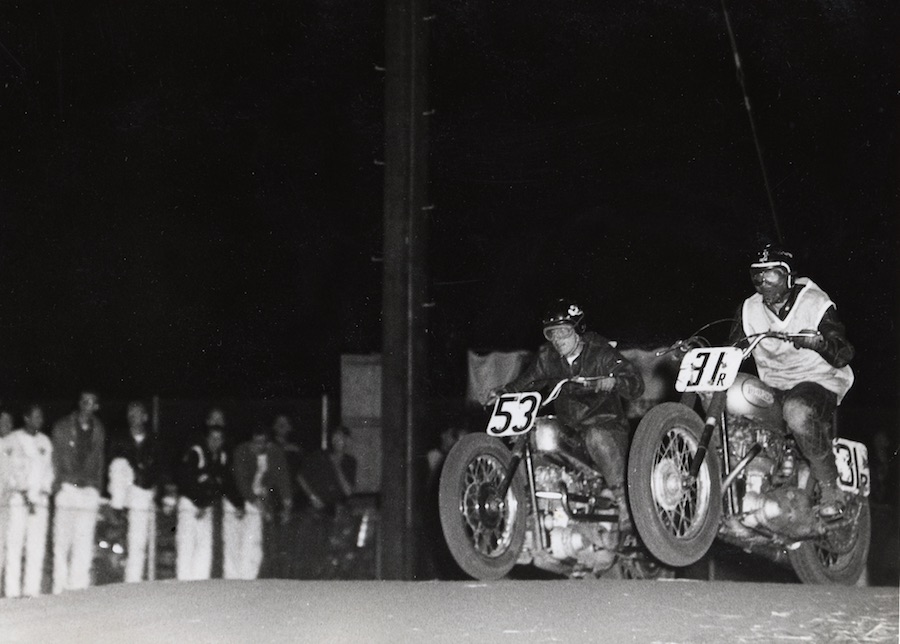
Rain thwarted Vesco’s record attempts with Sky Tracker at Bonneville in both 1982 and 1983, although a speed of 235mph was achieved in 1984 using a turbocharged Drake-Offenhauser Indycar engine before the meet was again rained out.
1985 saw Vesco qualify Sky Tracker for the world finals record runs with a pass of 318mph as his unusual creation started to show its potential. Like anyone involved in the pursuit of speed, Vesco was well aware of the dangers, but a blown rear tyre at about 350mph underlined the risks in no small way. Sky Tracker crashed and rolled end over end five times, totally destroying the car. Don came away with damaged vertebrae, concussion and broken bones in his hand and right foot.
Finding enough money to continue chasing the record was not unfamiliar territory for Don or his brother Rick, who was working on a parallel project. It made sense to join forces to complete a new twin-engined car, although it was not until 1991 with a pair of turbocharged 160 cubic-inch Drake-Offenhauser power units that it started to show promise with a run of 372mph.
Expensive engine failures were now becoming a problem and it was apparent to the brothers that piston-engine power was reaching its upper limits. A different propulsion source was needed if they were going to break Al Teague’s wheel-driven record of 409.978mph.
A gas turbine was seen as the best solution, and a compact helicopter unit was found comparatively cheaply in the form of an Avco Lycoming T55-L-11A SA. The streamliner now became known as the Turbinator, with its engine producing 3750 horsepower at 16,000rpm, driving all four wheels through a gearbox bolted to the front with a 2:1 reduction ratio on the shaft.
The first development runs took place in 1996 at Bonneville and over the next four years Don and Team Vesco set three national records at the world finals, all in excess of 400mph, culminating in a one-way run of 427mph in 2000. However, the world record slipped through their grasp that day when a gearbox failure in the Turbinator prevented the team turning the car around for a return run within the one hour, as stipulated by the international FIA regulations.
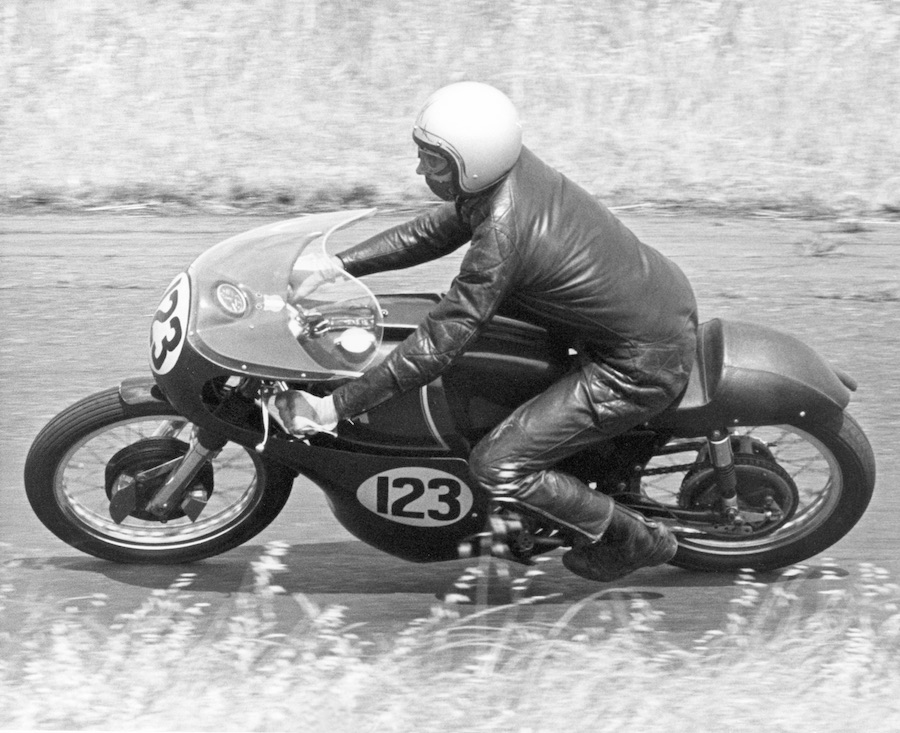
Team Vesco returned to Bonneville once again in 2001 for the World Finals, now with 500mph squarely in their sights. The team was buoyed by the fact that in a one-way shakedown run Turbinator had reached 470mph and was still accelerating out of the measured mile.
The record runs, however, produced a real problem. Don was unable to hold open the throttle as the engine temperature at the burners kept creeping up dramatically and could have caused
the engine to self-destruct. Vesco had to modulate the throttle 16 times to contain the temperature but still hit more than 458mph on the first run. The problem was the reduction gearbox bolted to the shaft on the front of the engine, which prevented enough cooling air to flow into the turbine.
The return run was going to be challenging, and again Vesco was required to modulate the throttle to contain engine temperature. But the worst was yet to come – the left-rear tyre blew inside the measured mile. It took all of Don’s skill and experience to keep the Turbinator on track and slow it down, stopping a mere five metres inside the black line marking the edge of the prepared strip. But Don Vesco had done the job; the return run had equalled the first to give a two-way average of 458.44mph.
Don and Team Vesco were naturally happy to have beaten Teague’s 1991 wheel-driven record in Spirit of ’76, but more delighted to have broken the record for a gas turbine automobile of 403.10mph set 37 years earlier in 1964 by Donald Campbell at Lake Eyre in South Australia driving Bluebird CN7.
In 1999 the American Motorcyclist Association honored Vesco’s achievements and inducted him into their Hall of Fame. Don turned 60 that year.
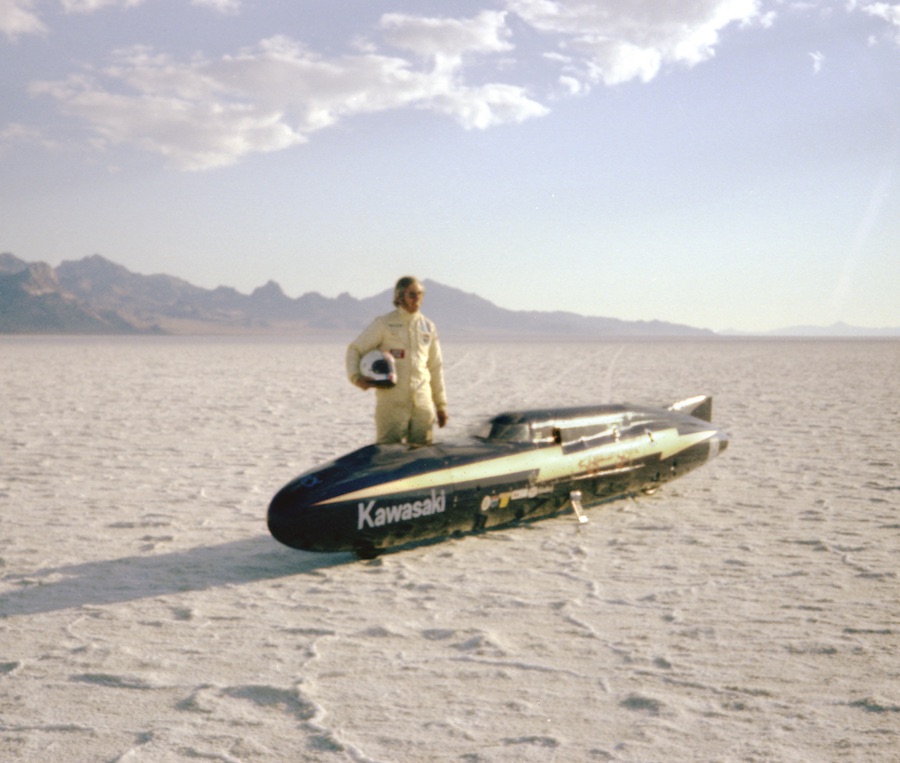
If there is one thing that old motorcycle racers know from experience, it’s that crashing and riding injured come with the territory. Vesco had suffered his share, but in 1995 – while spectating at a sprintcar meeting at the Manzinita Speedway in Phoenix, Arizona – Don was struck in the left eye and permanently blinded by a piece of debris thrown up by the rear tyre of a competitor’s car.
Driving Turbinator with one eye was just another obstacle for Vesco to overcome, which makes those 400mph-plus runs all that more remarkable. And it didn’t deter him from competing at Daytona in the BMW Battle of the Legends series, riding an R1100RS as fast as ever. He also continued to compete in American Historic Racing Motorcycle Association (AHRMA) events on one of Team Obsolete’s Manx Nortons.
Unfortunately, there was one final obstacle Don was unable to overcome before he could achieve his dream of topping 500mph. He was diagnosed with prostate cancer and succumbed to the illness on 16 December 2002, aged 63.
Vesco was inducted posthumously into the Motorsports Hall of Fame of America in 2004. Today, 15 years after he set that world mark, Don’s record still stands, but Team Vesco under the leadership of Rick Vesco will continue to work towards the dream of breaking the 500mph barrier and will be back at Bonneville with an upgraded and improved Turbinator II to be driven by Dave Spangler – if conditions allow.
Don Vesco, factory motorcycle racer, team owner, engine tuner, designer, land speed record breaker. Speed King.
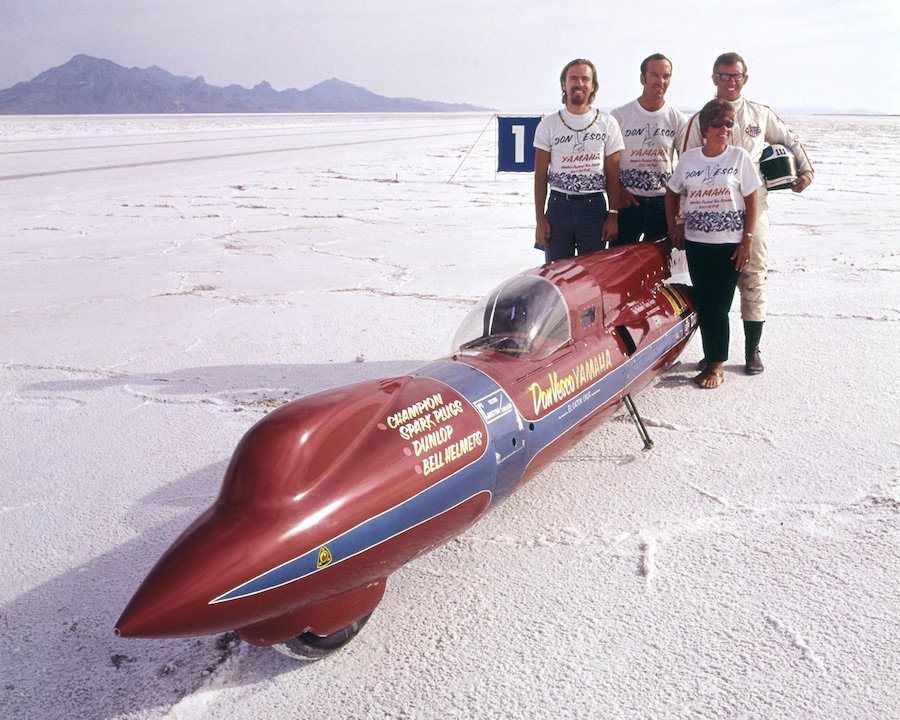
Salt flats in decline
Speed racers have long been concerned about the decline of the Bonneville Salt Flats, which remains as mysterious as it is disastrous. And many racers fear the clock is ticking on their beloved Speed Week event.
The annual gathering was cancelled in both 2014 and 2015 due to the poor state of the salt flats, and organisers also considered cancelling last year’s event. It went ahead, but conditions were so rough in places that vehicles were damaged and some racers were reluctant to risk their machines.
“It was a horrible course,” admitted Dennis Sullivan, chairman of the Save the Salt group. “This may be the last year you see any activity on the salt.”
Riders and drivers have been heading for Bonneville since the early 1900s, and it was the site of most high-profile land speed record programs from 1935 to 2012. It was immortalised by The World’s Fastest Indian, the movie that celebrated Kiwi Burt Munro, who set a world record at the age of 68 on a 47-year-old bike.
Soon after Speed Week 2016 concluded in August, the Bureau of Land Management that oversees the 30,000-acre salt flats began to test and research the dry lake surface to consider its future treatment. Its final report is not due until 2018, but Sullivan says this is too late and comes after decades of neglect.
“By then there won’t be any salt left,” Sullivan told Utah’s Desert News. “The salt’s so thin we’re literally scraping to find a course.”
University of Utah geologist Brenda Bowen, who is leading the study, admits there is little scientific knowledge of why the 12,000-year-old salt flats – formed at the end of the last Ice Age – have receded over the past three decades. She hopes her study will provide some answers.
In the meantime, Speed Week racers have merely pencilled 12-18 August 2017 into their diaries.
WORDS GEOFF DAWES
PHOTOS GORDON MENZIES
